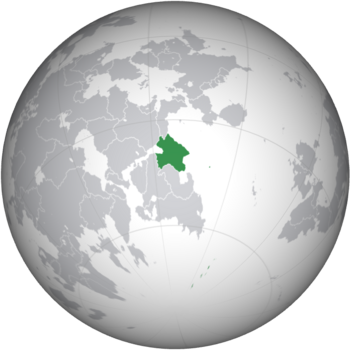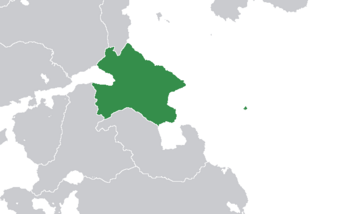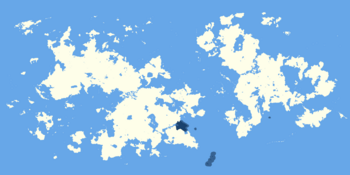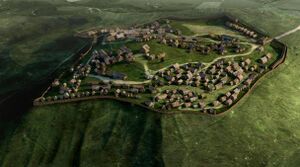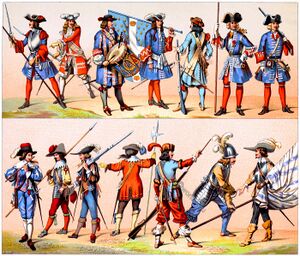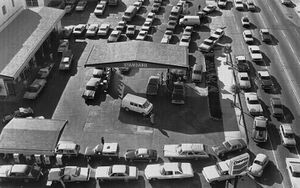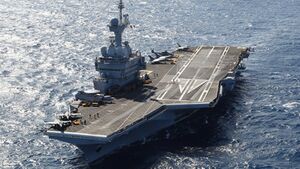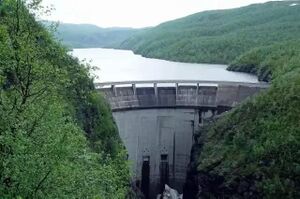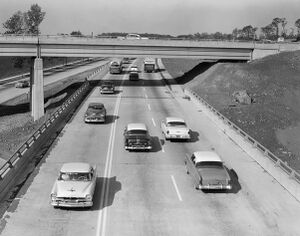Morrawia
Republic of Morrawia Morawská republika (Morrawian) | |
|---|---|
| Motto: NÁROD SOBĖ "A Nation to Itself" | |
| Anthem: "Land of Liberty, God's Country" | |
Location of Morrawia (blue or dark green) | |
| Capital and largest city | Králowec, F.D. |
| Official languages | Morrawian |
| Recognised national languages | Morrawian, German, Polish, Gorskan etc. |
| Ethnic groups (2018) | White (51.4%) Hispanic (8%) Black (5.7%) Native (4.5%) Mixed (23%) Other (7.4%) |
| Demonym(s) | Morrawian |
| Government | Federal Presidential Republic |
• President of Morrawia | Marcel Pelikán |
• Vice President | Anna Raṡínowá |
| Legislature | Federal Congress |
| Senate of the Republic | |
| House of Representatives | |
| Establishment | |
• Empire of Poth | 500 BCE |
• Empire of Ahia | 338 BCE |
• Empire of Tilicy | January 27th, 705 |
• Duchy of Morrawia | October 3rd, 907 |
• Kingdom of Morrawia | April 15th, 1131 |
• Empire of Morrawia | May 30th, 1645 |
• Republic of Morrawia | August 21th, 1822 |
• current Constitution | March 1st, 1836 |
| Area | |
• Total | 779,540.71 km2 (300,982.35 sq mi) |
| Population | |
• 2020 estimate | 87,467,105 |
• 2015 census | 84,234,149 |
• Density | 112.45/km2 (291.2/sq mi) |
| GDP (PPP) | 2024 estimate |
• Total | ACU 5,720 TRILLION (not ranked) |
• Per capita | ACU 65,371 |
| GDP (nominal) | 2024 estimate |
• Total | ACU 4,103 TRILLION (not ranked) |
• Per capita | ACU 46,891 |
| Gini (2023) | medium |
| HDI (2023) | very high |
| Currency | Morrawian Tollar (₮) 1:4 conversion with the US dollar |
| Time zone | UTC 0, UTC +1, UTC +3 and UTC +6 |
| Date format | mm-dd-yyyy |
| Driving side | right |
| Calling code | +415 |
| ISO 3166 code | MO |
| Internet TLD | .mo |
Morrawia, officially the Morrawian Republic (Morrawian: Morawská republika), or the Republic of Morrawia, is a country located primarily in Southern Thrismari. It also includes overseas regions and territories in the Sunadic, and Kaldaz oceans. Metropolitan Morrawia shares borders with Melvenia to the west, Foxomexra to the north-west, Kakland to the north-east and Wassilia to the south. Its metropolitan area extends from the Verisch Sea to the Sunadic Ocean and from the Duryṅ Mountains to the Bay of Morrawia; overseas territories include Gorsko, Oomoshi Islands in southern Sunadic, and Adelaide Atoll in the Kaldaz Ocean. Its twenty integral regions (two of which is overseas and one being non-integral) span a combined area of 779,540.71 km2 (300,982.35 sq mi) and have a total population of over 87 million as of January 2023. Morrawia is a federal presidential republic with its capital in Králowec, F.D., the country's largest city and main cultural and commercial center; other major urban areas include Berno, Tatrany, Torín, Ambrunn, Kalmary or Veligrad.
Morrawia's ancient history traces back to around 1.3 million years ago, with archaic humans. Neanderthals occupied the region until they were gradually replaced by Homo sapiens around 35,000 BCE. The Neolithic era began around 6,500 BC, leading to significant developments in demographics, agriculture, and later metallurgy. The formation of the Poth Empire, the first state in Morrawia's history advanced the region substantially. Subsequent centuries saw the rise and fall of various states and empires until the establishment of the Duchy of Morrawia in 907 AD. However, internal challenges and mor began during the reign of Rostislaw II. Queen Aneż I's reign in the 16th century brought about reforms, modernization, and the adoption of Protestantism.
The Great Morrawian Revolution erupted in 1822, fueled by dissatisfaction with the imperial system and a push for republican ideals. The conflict ended in 1827 with the republican victory and establishment of the Republic of Morrawia with Tristan Palacký as the first President. The country took part in the Great War on the side of the Alliance and came out victorious. The policy of Direktiwa skyrocketed the economy for the next 50 years and elevated the country to the world power. In the 1930s, major shake-ups of the political establishments occurred, almost creating the conditions for a domestic conflict. 1964 was marked by the unsuccessful coup attempt and an assassination of President Karl Walmark, making in it the only assassination of the President in Morrawian history.
Morrawia retains its centuries-long status as a one of the global centers of art, science and philosophy. It hosts the many of the world´s Heritage Sites and is the world's leading tourist destination, receiving over 90 million foreign visitors in 2018. Morrawia is a developed country with one of the world´s biggest economies by nominal GDP and by PPP. It remains a great power in global affairs in Thrismari and elsewhere. Morrawia is an original signatory to the Argdan Treaty, as well as a key member of the ANTERPOL, The International Court, UPEO and STO.
Etymology
The country's native name origin (Morawa) has several possible explanations, though only one is considered credible and is generally most accepted by the historic community and that is river Morawa, which itself is named after proto-slavic name for this region: Mari (and its iterations), meaning Mother. The Common name Morrawia was formed in the 1600s from the already mentioned name Morrawa and the suffix -ia, denoting a people or nation. The German name for the country became wide-used after the creation of the Common variant, with previous German communities calling it simply Morawa. Country is comprised of 14 states, 5 cities, two unincorporated territories, all with their own names based on rivers, landscape or people, who have been living in the area. Each state or city have their own etymologic historic meaning behind their name.
History
Prehistory (before the 6th century BC)
The oldest traces of archaic humans in what is now Morrawia date from approximately 1.3 million years ago. Neanderthals occupied the region into the Upper Paleolithic era, but were slowly replaced by Homo sapiens around 35,000 BCE. This period also witnessed the emergence of the cave art of the Lażeny and the Rotice, including at the famous Nebelwaldhöhle site, dated to c. 19,000 BC. At the end of the Last Glacial Period (10,000 BC), the climate became milder. It was also around this time, Germanic tribes of Verno-Kak people from Kakland started to migrate to the northern area of Morrawian territory, establishing presence there to this day. From approximately 6,500 BC, this part of southern Thrismari entered the Neolithic era and its inhabitants became sedentary.
After strong demographic and agricultural development between the 4th and 3rd millennia, metallurgy appeared at the end of the 3rd millennium, initially working gold, copper and bronze, as well as later iron. Morrawia has numerous megalithic sites from the Neolithic period, including the exceptionally dense Karnaċ stones site (approximately 4,000 BC).

Antiquity (6th century BC–4th century AD)
The period from the 6th century onwards saw great development in the mostly tribal Morrawia. Due to relative stability and the lack of outside threats, Morrawia developed with countless tribes scattered around the middle of the country where most fertile lands were located and where today agricultural states of Turhinia, Wallash, South Banawia, and Elbennau are located. Also around this time, maritime tribes from various islands of the Sunadic established their presents mainly on the eastern coast of Morrawia. Around the 5th century BC, in southern Morrawia, a small association of tribes began to form with a single figurehead on the top called Poth, This confederation of tribes was held together by two things: leader Poth and the shared desire to protect themselves against enemy raids from the north and west. Historians nowadays call this state Poth Empire, or Pothian State. Slowly, it began absorbing numerous other tribes. Around the year 450, a massive settlement near today Králowec was established as a major port of the state.
In the same year, Poth died and was succeeded by his son Poth II, thus transforming the tribal confederation into a proper empire. The end of the 5th century saw the collapse of the empire, caused by increasing hostility of surrounding tribes and nations.
Early Middle Ages (4th–11th century)
In 383 AD Empire of Ahia conquered weakened Morrawian tribes and for another 250 years, it ruled over all of Morrawia. This period saw relative prosperity and even new technology and methods of agriculture and manufacturing. When the Empire collapsed in 645 AD, Morrawia was back in the tribal era, until the early 8th century, when the Empire of Tilicy formed and established concrete rule over the most of the land of today Morrawia. Most important for the period, apart from the various advancements in life and technology, was the decision of the King Jaromír II to move the capital to a new location, subsequently founding Králowec in 857 on the site of the old tribal settlement, which was by then abandoned.
In 907 Duchy of Morrawia was formed, splitting from the old Tilician kingdom as it became weaker. Its first ruler was Pṙemysl I. Morrawia's population primarily consisted of farmers residing in small villages. The landscape of the region at that time predominantly comprised of forests, some marshlands, and mountains in the north and west.
The growth and relative prosperity in the country persisted for a number of years. However, during the reign of Rostislaw II, the nation started to face internal challenges and began to decline, largely attributed to Rostislaw's inability to govern effectively. In this time, major parts of the country were either given to neighbouring countries or seceded on their own. Amongst these were for example cities of Kalmary and Veligrad in 999 and 1007 respectively.
High and Late Middle Ages (11th–16th century)
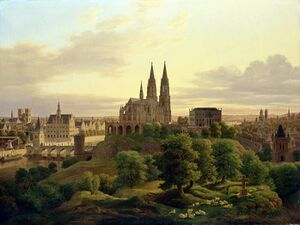
Around 1050, this trend was beginning to reverse as a sequence of strong rulers, who through intimidation, murder and bribes consolidated power starting with the Boṙiwoj II from the House of Pṙemysl. The next 100 years is generally summarized as the "Healing Period" as tens of houses and dynasties gradually united the country through conflict, marriage and treaties into a single nation, and the Kingdom of Morrawia was fully declared in 1131 by King Wladislaw I from the House of Pṙemysl.
The early 13th century saw the biggest expansion and bloom of the country due to mariages orchestrated between Pṙemysls and Adlertahls, effectively uniting massive parts of the country. King Otakar III, also known as the "King Educator" was determined to expand Morrawia influence by establishing Králowec University in 1245, the oldest university in Morrawia. He also created numerous silver and gold mines across Morrawia and created first truly Morrawian currency: Ran.
Early to mid-14th century cities like Pilzáṅ, Kalmary, Jadraník and Owary were mostly founded in the early 14th century by Pṙemysl II and his son Pṙemysl III. Western coast was attached to Morrawia in 1312. From around this time, Morrawia´s was focused on safeguarding the nation and all of Alabaster Gulf from all foreign threats by massively expanding the naval capabilities of the nation with a policy continuing to this day.
The "Crisis of the 15th century" is the the name given to the series of events taking place from the 1432 to around the end of the century, where no direct heir to the throne was born to a royal couple of Jaromír V and Aneżka Rawilská, creating direct infighting in the Pṙemysl dynasty, where several indirect members of the family ruled Morrawia and numerous branches dying in the process. The situation was fully resolved in 1495 with the publishing of the Dáwa Edict by King Boṙiwoj VII.
When the Queen Aneż I/Aneżka I ascended the throne in 1510, the country was lacking behind its neighbours, it was inefficient and had a hungry population on the verge of revolt. She then fixed the problems in the country, whilst also experiencing extreme pressure from the foreign powers. Morrawia was modernized with reforms to economy, tax collection, military, especially navy, which she wanted it to be the most powerful in the Alabaster Gulf.
In 1520, when Protestantism was expanding around the world, Aneż I adopted it instead of Catholicism as she saw it holding the country back, subsequently angering aforementioned German parts of Morrawia, mainly the region of today Elbennau and North Banawia. It is speculated, that it was this decision killed her a year later by the group of assassins.
Mid-16th century saw yet another merger with the House of Adlerthal, despite previous efforts to avoid this, thus creating House of Pṙemysl-Adlerthal. Adlerthals were centuries old noble house, who centuries earlier promised to serve the Pṙemysls in exchange of administration of all German-speaking territories of Morrawia.
Early modern period (16th century–1645)
From the 16th century to the year 1645, Morrawia was starting to get involved in the increased sea exploration and subsequent importation of slaves from Thrismari, Thuadia or Olivacia. In 1551, the Oomoshi Island where discovered by Jan Mladý of Powaṡowice, a western nobleman serving Queen Ludmila I in the Morrawian Royal Navy. Despite the discovery, the archipelago was not claimed at the time by Morrawia. At this time, practise of slavery began to get a hold in Morrawia. While the state began condoning the practice of slavery with letters patent in the 1550s, Ludmila I only formalized this authorization more generally in 1567 in the last year of her reign with the Veligrad Proclamation. By the early 17th century, Veligrad and Kalmary had become the primary ports involved in the practice.
By 1645, Pṙemysl V restructured the kingdom and gave himself and his successors the title of Emperor of Morrawia as a final step in his consolidation of power and to facilitate the position of Morrawia on the world stage.
Imperial Morrawia (1645-1822)
After the death of the first Emperor Pṙemysl I in 1650, Adlerthals started their efforts of "German Restitution" starting with the Emperor Francis I. It was a process to prioritize German culture, customs, language and more outside of German-speaking states. These included territories such as today´s North Banawia or Elbennau, or newly conquered territories of Iweria and Dalmate.
By 1648, Morrawia deafeated Muslim Eyalets in what is today Yugoslavia and created vassal states, essentially rulling over the most of southern Thrismari.
In 1670, massive war saw almost all of northern territory annexed just 5 years later and the vassalisation of the western part of the country under the rule of Rudolf I.
The year 1700 was one of the most significant years in imperial history as this was the year that northern territories broke off from Morrawia entirely, fueled partly by the weakened Morrawia after the pandemic. Following this, Emperor Rudolf II ordered a reshuffle of his Chamber of Regency, creating a more independent governing body alongside it called Lord Assembly, also known as Assembly of Rudolfinites for it´s continuous strong bond to the Emperor. In 1753, Morrawia conquered land near the equator, calling it Equatorial Francienne, after the first Morrawian emperor. Thirteen years later, full on take over of the Gorsko located in the middle of the Alabaster Gulf commenced, becoming an Imperial Territory. By 1780s, territories south of Morrawia were the last to slowly but surely liberate themselves from imperial overlords. Northern territories revolted one last time and Morrawian forces burned down dozens of villages and settlements. This brought about the end of hostilities in this area, until their resurgence after the proclamation of the Republic.
In 1815, amidst incredible growing tensions and instability in the country, Emperor Joseph I published Proclamation to All the Morrawian People, creating first ever constitution, called Summer Constitution. With the publishing of the Proclamation, Imperial Council of Deputies was established in Králowec with some powers granted to the assembly. Also correlating with the publishing of the Proclamation was the definitive independence of Yugoslav lands. The country was subsequently federalized on the lines of mostly ethnic groups into 5 different States and 1 territory (Nowé Zámoṙí). Josephinian Code is the set of laws and statutes created by Emperor Joseph I as the part of the constitutional order in the country. The constitution further expanded civil, religious and political rights, though not the point many have wanted.
Despite Emperor´s best efforts, dissatisfaction throughout the empire grew. During this time, a prominent young lawyer from the city of Polipa, Tristan Palacký, who advocated for the Republican model for Morrawia for many years, which made him both popular amongst the majority of people, especially surfs and also made him be arrested multiple times for inciting violence and organizing anti-government protests. This made him even more popular.
On the 3rd August 1822 the waves of protests continued and in the town of Torín in Turhinia, people protested in Přemysl Square against the mayor Frederik Starý, who was a staunch supporter of the imperial system. Tristan Palacký, recently released from prison, later came to the town and expressed his support for the crowd. Mayor later ordered the soldiers to shoot into the crowd to disperse it.
This marks the official start of the Great Morrawian Revolution.
Revolutionary Morrawia (1822-1836)

Following this event, in the span of several weeks, center of the country, as well as great population centers were all revolting and demanding change. On August 21, 1822, National Assembly, comprising of notable politicians, sympathetic aristocracy and other important figures of Morrawian public life, as well as the more elitist group, "August Men", a group around Tristan Palacký and his brother Emanuel, considered founding fathers of the republican Morrawia, met in Torín to oficially declare the Republic of Morrawia as a way to "ensure stable future for generations to come and freedom, liberty and fair justice for all citizens of Morrawia". This amongst many other agreed upon principles and rules created Articles of the Republic as a guiding constitutional law of the nation. Battle of Králowec saw Republican Legions and many citizens of Králowec fight against highly organized Imperial Army under the command of General Waṡíċek. Despite obvious and clear disadvantage, the battle ended in a victory of the revolutionary forces and the biggest casualties of any battle during the revolution at 10,000 casualties on the republican side and 15,000 on the imperial side.
With Králowec being under full control of the Republicans, being important strategic and symbolic place, Tristan Palacký was urged by his closest advisors to stabilize the fronts and focus on minor advances. He instead ordered a joint offensive from every captured town and settlement. This would prove to be a major mistake and resulted in a "Revolutionary Schysm", when part of the republican movement was in great disagreement with the loyal Tristanist wing and threatened to brake off, and the "Night of Tears", which saw surprise attack by the imperial forces on the city of Torín, damaging it greatly and killing important personalities of the republican leadership, nearly crippling the movement.

In February of 1825, majority of German speaking regions as well as the west and the south of the country was under the Republican control. Mid-1825 saw the succession of eastern, majority Polish-speaking region regions as well as of Nowé Zámoṙí. These were promptly reannexed shortly after the war in 1830 and 1831 respectively. On the March 12th, 1829, last pockets of imperial resistance surrendered after the Battle of Faríṙ Hill, which was one of the bloodiest battles in the war, to the republicans and the Great Morrawian Revolution officially ended with the People´s Declaration by Tristan Palacký and the publishing of the Edict for the Republic, published by the Emperor Joseph III, now going by the civilian name, Joseph Adlerthal, seemingly supporting the republican movement and respecting the will of the people. Commission for the Creation of the Constitution was formed by the most senior members of the Council of Ministers and the members of the Congress to draw up and create the constitution for the country as the current Articles were not sufficient for the effective governance of the nation. This was subsequently achieved 1835 with the creation of the constitution and final ratification of the document on the March 1st, 1836.
Republic in the early years faced not only economic, but often societal and military hardships with frequent sabotages and raids by imperial sympathizers. These mostly ended by the end of 1836.
Post-revolutionary period (1836-1911)
In the rest of the 19th century, Morrawia was facing many problems, amongst them economic stagnation, political chaos and unresolved colonial question. First president Tristan Palacký served 3 terms and was marked by solving of these issues and getting Morrawia back on the world stage. Palacký's Administration oversaw influx of former colonial subjects to Morrawia, who under Palacký's humanist beliefs "have as much right to live happy and fulfilling life as any white Morrawian man". Morrawia saw the biggest economic boom in its history up to that point, almost doubling its GDP. This coincided with the ending Industrial Revolution in the country in the mid-19th century and the ever-growing labour movement and social changes.
In 1868, Federal Congress passed the Equatorial Francienne Territorial Act, granting that area a status of unincorporated organized territory with it´s own governmental structure.
In 1900, the Republican Union Party dissolved into several smaller parties, most notably, the Republican Party. Country also adopted the policy of Morrawian regionalism, which states, that Morrawia and its government will do everything in its power to keep the region of southern Thrismari free from foreign threats and in the state, which is beneficial to the country itself. The policy was later modified and expanded way after the Great War into what is known as the "Abrahám Doctrine". This policy is more or less used to this day as a justification for more agressive foreign policies of Morrawia.
Called by some a "Septennial of Reforms", years 1900-1907, leading up Morrawia getting involved in the Great War, Liberal Party expanded its lead in both houses of the Federal Congress and with the 20th Amendment to the Constitution gave all women the right to vote in all elections in 1905. Various social and economic programs were initiated at this time, creating the basis of the social state, which is present in Morrawia to this day (annual leave, eight-hour workdays, women in government).
Between 1907 and 1911, Morrawia was involved in the Great War.
Half Century of Spring (1911-1964)

The war never reached Morrawia and together with late enter to the war, Morrawia stayed consistently strong in its ability to provide both aid and soldiers to The Alliance. The conflict eventually ended in 1911, with the victory of the Alliance and Morrawia. For more than 20 years after the war, country supplied war-torn countries with basic supplies and as a part of the Lend & Reconstruct Program, Morrawia offered loans to aid allied economies. Alabaster Entente was formed in 1911 with Kakland to strenghten the regional defense capabilities, following the end of the war. This alliance would later be bases for the Sunadic Treaty Organization. In 1912, Karel Tusar was elected President and enacted the policy of "Direktiwa", which significantly increased the government involvement in the economy, defining majority of the 20th century and beyond.
In 1915, Morrawia took an advantage of a weakened Anáhuac, and invaded Atolón Adelaida, or Adelajdský/Adélský atol, claimed by Anáhuac. Initially only developed as a strategic point for spreading Morrawian influence, the atoll was quickly turned into hub for scientists, biologists, fishermen and most importantly - guano miners. In the 1950s, the territory became the site of first nuclear tests and just a decade later, a naval base was constructed on the southern most tip of the atoll, which serves as a major strategic point to this day.
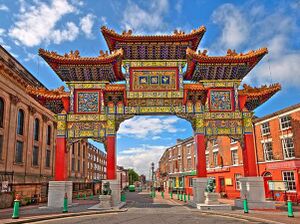
The Radical People’s Party expanded in popularity on the political landscape around this time. 1925 marked the Morrawian blockade of Cordomonivence, due to their treatment of Slavs on their territory. The intervention ended by the end of 1930 with a Smoke Room Agreement, which eventually ended in impeachment and resignation of president Sád, a Republican. By the 1930s, increased migration from Tokuto, with the Tokutese imperial family and many of the country´s citizens sought refuge in Morrawia after mounting pressure and growing radicalism from the left-wing government in the country. With the family, the result of this growing discontent saw the influx of hundreds of thousands of Tokutese, coming to Morrawia and settling mainly on the eastern coast. From that point, large communities formed, called Hinode Towns or Henody, with a presence of Yakuza-like organizations, emerging as the formidable threat in the latter half of the 20th century in these areas. 1941 saw the complete ban of the Radical People’s Party from both national and local politics, by the Constitutional Tribunal, making it the one and only major party ever banned in Morrawian republican history.
Generally, the end of the Half Century of Spring is dated on the November 17th, 1964, when a group of former federal officials, generals and far-right groups, largely connected to the disbanded Radical People's Party, coordinated an attack on the Federal Government and both federal and state institutions. These attacks were largely repelled by the respective and state National Guards, with heavy fighting occuring near The Capitol, Králowec, F.D., where only 30 Congressional Guards defended the building against several hundred attackers, still with Representatives and Senators in the buildings, later aided by the local police, National Guard and even army. President Walmark's motorcade was ambushed, while being escorted to a safe place, losing his life in the process. State of Emergency was declared and the combined federal and military forces were able to crush all domestic terrorists in all states of Morrawia and the coup attempt was declared crushed on the 30th November.
Contemporary Period (1964-present)
1970s were marked mainly by the 1972 Oil Crisis, which forced many countries around the world to seek different types of means of energy extraction. In Morrawia, newly established Ministry of the Environment conducted a plan supported by the majority of the Federal Congress to eventually convert majority of Morrawia's energy production capabilities from fossil fuels and coal into nuclear energy. This process was seen as having a strategic move allowing Morrawia to be energy independent nation. today around 72% of total energy production in Morrawia is generated by nuclear power plants.
1970s also saw a general process of deregulation and economic liberalization began in this decade and was characteristic of the 1980s. The new economic system of "Indirektiwa", which takes much more hands off approach to economy, relying much more heavily on the free market and a private sector. This led to both high GDP growth, and the rise in standards of living, but also to widening of the wage gap, rise in poverty and rise in unemployment. 1980s were also the decade of the struggle for minority rights in Gorsko territory and other parts of the country, amplifying the German effort going on for several decades.
The growth continued throughout the 1990s, when a wave called the New Way Forward, referring to both economic and societal reforms, saw one of the first LGBTQ+ legislations, welfare reform, environmental regulation, the introduction of more worker protections, a scale-back of the Indirektiwa policy, and the single biggest economic growth in the country's history. However, in 1995, the country faced a significant crisis in its territory of Equatorial Zambora, where large-scale protests erupted, demanding independence. President Mariána Turmenská deployed the military to restore order, escalating tensions. A referendum held later that year, largely after waves of international pressure, and paved the way for ongoing negotiations, and by January 1, 2001, Equatorial Zambora gained independence. Meanwhile, the 2000s were characterized by an economic crisis, largely caused by the unchecked growth of the economy and frequent experimentation in the field of economics by different administrations and the Federal Reserve System. The effect of this was a gradual return of Direktiwa-like policies in the country. The early 2010s saw a wave of mostly domestic terrorist attacks across the country. This phenomenon, named "Years of Terror", was initially believed to be a coordinated effort to destabilize the nation, though no connection between the different attacks was ever found.
In 2023, Morrawia declared war on the People's Republic of Anavero and with coalition allies invaded the country and subsequently winning the war next year. The same year, terrorist attacks in Králowec, which killed hundreds, resulted in the month long State of Emergency. Morrawia was also on the forefront of various humanitarian missions around the world.
Geography
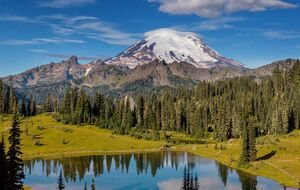
The vast majority of Morrawia´s territory and population is situated in Southern Thrismari and is called Metropolitan Morrawia, to distinguish it from the country's overseas territories. It is bordered by the Verisch Sea in the northwest, the Bay of Morrawia in the south, and Alabaster Gulf together with the southern Sunadic Ocean in the east. Its land borders consist of Melvenia in the west, Wassilia in the south, and Kakland and Foxomexra to the north. Except for the northwest and southeast, most of Morrawia's land borders are roughly delineated by natural boundaries and geographic features: to the west, north, south and center, the Great Tatras Mountains, Duryṅ Mountains, Wáwer Hills and Náwarské Hills, respectively. Due to its shape, Morrawia is often referred to as the "Hammerhead". Metropolitan Morrawia includes various coastal islands mainly in the east and in the south. Metropolitan Morrawia is situated mostly between latitudes 48° and 51° N, and longitudes 12° W and 19° E, on the southern edge of Thrismari, and thus lies within the southern temperate zone.
Morrawia´s total area, with its overseas territories (Tawuii, Gorsko and Adelaide Atoll), covers 779,540.71 square kilometres (300,982.35 sq mi), the average to below average amongst Southern Thrismari countries. Morrawia possesses a wide variety of landscapes, from coastal plains in the south, southeast, east and northwest, and west and north to mountain ranges and the Farská Massif in the south and south-central. The highest point in the country, Mount Owċín is 2501 metres above sea level located in the Duryṅ Mountains.
Morrawia's longest rivers are the Morawa, the Nutra, the Lew, and the Wor. Apart these the other major rivers include the Tatra, the Jáwa, the Hron and the Wágh. The country possesses a high density of lakes, numbering around 800 and mostly concentrated in the western state of Slowannia, within the Tahoj State Park.
Environment

Morrawia was one of the first countries to create an environment ministry, in 1970. Although it is one of the most industrialised countries in the world, Morrawia is ranked lower by carbon dioxide emissions, behind less populous nations such in Anteria. This is due to the country's heavy investment in nuclear power following the 1972 oil crisis, which now accounts for 61 percent of its electricity production and results in less pollution. Morrawia is considered one of the most environmentally catious nations in the world according to numerous ratings and studies.
Forests account for 35 percent of Morrawia's land area representing an increase of 8 percent since 1990. Morrawian forests are some of the most diverse in Southern Thrismari, comprising more than 130 species of trees.
The national parks of Morrawia are a system of 28 national parks, national preserves and many natural protected territories, national maritime areas or national wildlife reservations throughout metropolitan Morrawia and its overseas territories, coordinated by National Park Service (Morrawian: Spráwa národních parkú) within the Morrawian Ministry of the Environment. The first national park was established in 1896; the most recent park was established in 2017. National parks and other protected areas are created by Presidential Decree with the signature. Amongst the most famous national parks and other protected areas are Duryṅ Mountains National Park, Poth National Park, Great Tatras National Park and Slowannian Lake National Park.
Climate
The climate of Morrawia is generally favourable to cultivation. Most of Morrawia lies in the southern part of the temperate zone, although the subtropical zone encompasses its southern and northeastern fringe. Almost all of Morrawia is considered to be under the effect of oceanic influences, moderated by the currents of Sunadic Ocean on the east, Bay of Morrawia to the south, and the Verisch Sea on the northwest. Average annual temperatures decline to the north, with Králowec on the southern Lumbardýn Coast at 15 °C (59 °F) and Hejná on the northern border at 10 °C (50 °F).
Rainfall is brought mainly by easterly winds from the Sunadic and is characterized by cyclonic depressions. Annual precipitation is more than 1,270 mm (50 inches) at higher elevations in western and northern Morrawia. In winter central and northern Morrawia especially may come under the influence of the continental high-pressure system, which brings extremely cold conditions and temperature inversions over the cities, during which cold air is trapped below warmer air, with consequent fogs and urban pollution. The climate of Morrawia, then, can be discussed according to three major climatic zones — oceanic, continental, and sea, with some variation in the Farská Massif and in the mountains.
Throughout the year, the coldest temperatures are recorded in Tawuii, while the warmest temperatures typically are in the eastern and southern part of the country and on the Adelaide Atoll.
Administrative divisions
The Morrawian Republic is divided into 14 states (located in Thrismari and overseas), 5 city-states, 1 federal district, and 1 incorporated and 1 unincorporated territories, an uninhabited island with a Navy base directly under the authority of the Minister of Defense.
Subdivisions
Since 1958, Morrawia is divided into 20 federal subjects: 14 states, 5 city-states, 1 federal district, and 1 incorporated and 1 unincorporated territories. The states are further subdivided into 796 counties, which are usually named after a figure, place or historical event and are also numbered alphabetically. The county name is used for administrative purposes, postal services or tourism advertisements, while numbers are used voting and elections, for emergency services and statistical analysis.
Demographics
With an estimated January 2023 population of 88,052,791 people, Morrawia is considered one of the more populous countries in the world and Thrismari.
Morrawia is an outlier among developed countries, particularly in Thrismari (more specifically the southern part of the continent), for its relatively high rate of natural population growth. Between 2007 and 2017, Morrawia saw one of the highest overall increase in population in the region of southern Thrismari and was one countries where natural births accounted for the most population growth. This was the highest rate since the end of the baby boom in 1975 and helped the country greatly after almost a decade of stagnation and even decline in the early 2000s.
As of January 2021, the fertility rate declined slightly to 1.74 children per woman, below the replacement rate of 2.1, and considerably below the high of 4.41 in 1800. Morrawia's fertility rate and crude birth rate nonetheless remain among the higher ones amongst developed nations. However, like many developed nations, the Morrawian population is aging; the average age is 42.7 years, while about a sixth of Morrawian people are 65 or over. The average life expectancy at birth is 81.6 years.
From 2006 to 2011, population growth averaged 1.2 percent per year; since 2011, annual growth has been between 0.9 to 1.01 percent annually. Immigrants are major contributors to this trend; in 2010, 21 percent of newborns in Morrawia had at least one foreign-born parent.
Ethnic composition of Morrawia (2021)
Ethnic groups
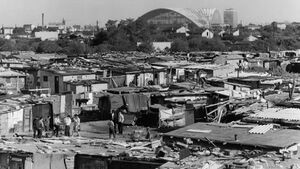
Historically, Morrawian people were mainly of Slavic-Germanic origin, with a significant admixture of Kakish and Native groups reflecting centuries of respective migration and settlement. Through the course of the Middle Ages, Morrawia incorporated various neighbouring ethnic and linguistic groups, as evidenced by Foxomexran and Ahian in the north and Wassilia in the south.
Large-scale immigration over the last century and a half have led to a more multicultural society and Morrawia being called a "melting pot". In 2020, the government and the Montany Institute estimated that within Metropolitan Morrawia, 46 million people were White (52.57% of the population), 7 million were Hispanic (8% of the population), 5 million were Black (5.71% of the population), 1 million were Native (1.14% of the population), and 20 million were either mixed (22.87% of the population) or other ethnicities (8.5 million and the 9.71% of the population), mainly those from Olivacia and Thuadia.
The significant ethnic hotspots in the country is the Lumbardýn Coast, where various groups of people like from Tokuto, Anáhuac and other countries reside.
Immigration
It is currently estimated that 40% of the Morrawian population is descended at least partially from the different waves of immigration since the mid-19th century; between 1840 and 1851 alone, about 4.7 million net immigrants came to Morrawia with another large wave coming in the 1930s, where about 2.9 million net immigrants came to the country. The largest wave came in the 1960s and in the 1980s to escape from war-torn regions during the Age of Civil Wars, where around 5.7 million net immigrant arrived in Morrawia. They were joined by numerous former colonial subjects from Western Olivacia and Thuadia, as well as numerous Thrismarian immigrants from Kakland and Meredonne immigrants from Hylia.
Especially in the 1930s, migrant camps and shanty towns sprung out throughout the eastern, western and southern coast of Morrawia due to mass migration from Tokuto and other nations after various events in their home countries, these people arrived at the shores of Morrawia. These migrant camps stayed well over to 1970s, when they finally disappeared around 1978, after several federal programs to help the immigrants integrate into the society.
The trend of migration is significantly lower today, however shows increasing tendencies in the last 5 years.
Major cities
Morrawia is a highly urbanised country, with its largest cities being Králowec, F.D. (3,539,961 inh.), Berno (2,729,794), Torín (2,436,865), Kalmary (2,097,162), Veligrad (1,793,766), Ambrunn (1,525,973), Jadraník (1,192,490), Elbenburg (1,004,917), Tatrany (895,738), and Wratislaw (601,648). Rural flight was a perennial political issue throughout most of the 20th century.
Largest Cities in Morrawia
Morrawian 2020 Census | |||||||||
|---|---|---|---|---|---|---|---|---|---|
| Rank | State/City-state | Pop. | |||||||
 Králowec, F.D.  Berno |
1 | Králowec, F.D. | Králowec, F.D. | 8,324,741 |  Torín  Kalmary | ||||
| 2 | Berno | City of Berno | 4,729,794 | ||||||
| 3 | Torín | Turhinia | 2,436,865 | ||||||
| 4 | Kalmary | City of Kalmary | 3,097,162 | ||||||
| 5 | Veligrad | City of Veligrad | 2,793,766 | ||||||
| 6 | Ambrunn | City of Ambrunn | 2,525,973 | ||||||
| 7 | Jadraník | City of Jadraník | 1,192,490 | ||||||
| 8 | Elbenburg | Elbennau | 1,004,917 | ||||||
| 9 | Tatrany | Slowannia | 895,738 | ||||||
| 10 | Wratislaw | Polinia | 601,648 | ||||||
Language
The official language of Morrawia is Morrawian, as per the 26th Amendment, a Slavic language derived from Proto-Slavic. Since 1515, the Academy of Morrawia has been Morrawia's official authority on the Morrawian language, although its recommendations carry no legal weight. There are also regional languages spoken in Morrawia, such as Turhinian, Sollandish, Iwerian (German dialect), and Tawuiiese (Native dialect) with several local communities having their distinct dialects and languages.
Morrawian alphabet has 40 letters: Aa Áá Bb Cc Ċċ Dd Ḋḋ Ee Éé Ėė Ff Gg Hh Ii Íí Jj Kk Ll Mm Nn Ṅṅ Oo Óó Pp Qq Rr Ṙṙ Ss Ṡṡ Tt Ṫṫ Uu Úú Vv Ww Xx Yy Ýý Zz Żż. The stress is always on the first syllable. Words can relatively flexibly move around the sentence. Foreign words are written exactly like they are in that particular language, with possible exceptions in pronouns, though this is not a concrete rule. Sounds the standard alphabet doesn´t have a letter for, also exist. The whole language dates back to the 7th century.
The Government of Morrawia does not regulate the choice of language in publications by individuals, but the use of Morrawian language is required by law in commercial and workplace communications. German is also required, but only in majority German speaking states like North Banawia and Elbennau. In addition to mandating the use of Morrawia in the territory of the Republic, the Morrawian government tries to promote Morrawian in Southern Thrismari and globally through institutions such as the International Court. The perceived threat, especially in the past, from Germanification has prompted efforts to safeguard the position of the Morrawian language in Morrawia ever since the end of the Great Morrawian Revolution, though bilingualism practically exists in Morrawia. Besides Morrawian, there exist 37 vernacular minority languages of Morrawia, 25 spoken in Morrawian metropolitan territory and 12 in the Morrawian overseas territories. It is estimated that between 100 million and 200 million people worldwide can speak Morrawian, either as a mother tongue or as a second language.
According to the 2010 survey carried out in Morrawia by the Institute of Linguistics and based on a sample of 15,350 persons, Morrawian was the native language of 76.4% of the total population, or roughly 65 million people, followed by German (12.9%, 11 million), eastern dialects (3.5%, 960,000), Native dialects (1.0%, 770,000) and Hylian (0.3%, 640,000). Native speakers of other languages made up the remaining 5.9% of the population.
Religion
Religion in Morrawia (2015)
Morrawia is a secular country in which freedom of religion is a constitutional right. Morrawian religious policy is based on the concept of svėtskost, a strict separation of church and state under which public life is kept completely secular. Until 1897, the exception to this were the states of Iweria and North Banawia where Protestantism, Catholicism and Judaism enjoyed official status and state funding and were given these privileges after the revolution as to prevent them from seceding.
According to a survey held in 2015 by Montany Institute and NSB, 57% of the total population of Morrawia was Christian, 27% had no religion (atheism or agnosticism) or were not affiliated with any religious group, 3% were followers of Islam, 2% followed Shintoism, 1% Buddhism, 1% conclude native religions and 8% were followers of other faiths. Estimates of the number of Natives in Morrawia vary widely. In 2003, the Morrawian Ministry of the Interior estimated the total number of people of Native background to be between 2 and 3 million. The current Jewish community in Morrawia is one of the largest in Southern Thrismari, ranging between 480,000 and 600,000, about 0.6% of the population as of 2016. In Gorsko, 65% of the total population make up Protestants.
Catholicism has been the predominant religion in Morrawia almost all of its history, though starting with the 1500s and in years leading up to the Great Morrawian Revolution, Protestantism became the dominant religion in the country. However it is not as actively practised today as it was. Among the 50,000 religious buildings in Morrawia, 87% are Protestant. During the Great Morrawian Revolution, activists conducted a campaign of de-Catholisation (part of the Silent Revolution movement), ending the Catholic Church as the state religion. In some cases, clergy and churches were attacked, with iconoclasm stripping the churches of statues and ornaments. Constitution of Morrawia established freedom of religion and official state secularism, strict separation of church and state, which established the principle of svėtskost.
To this day, the government is prohibited from recognising any specific right to a religious community (except for legacy statutes like those of military chaplains and in the past for the local law in North Banawia and Iweria). It recognises religious organisations according to formal legal criteria that do not address religious doctrine. Conversely, religious organisations are expected to refrain from intervening in policymaking and are exempt from taxes, if they don´t violate the legal criteria.
Certain groups, such as Capitology, Church of Satan, the Morrawist Church, or the Children of the Trinity are considered cults ("sekty" in Morrawian); therefore they do not have the same status as recognised religions in Morrawia. Sects is considered a pejorative term in Morrawia.
In June 2023, Representative Wáclaw Folina (L-PM) proposed the bill, that would abolish the tax exemption of officially recognized religions.
Health
The Morrawian health care system is one of universal health care largely financed by government national health insurance as well as one administred by the individual state governments. In a 2010 assessment of world health care systems, it was found that Morrawia provided the "close to best overall health care" in the world. The Morrawian health care system was ranked consistently one of the best system worldwide for the last 40 years. In 2021, Morrawia spent 10.7% of its GDP on health care, or ACU 3 596 per capita, a figure much higher than the average spent by countries around Southern Thrismari. Approximately 80% of health expenditures are covered by government-funded agencies.
Care is generally free for people affected by chronic diseases such as cancer, AIDS or cystic fibrosis. The life expectancy at birth is 79 years for men and 83 years for women, one of the highest in the the World. There are 3.55 physicians for every 1000 inhabitants in Morrawia. As of 2017, approximately 120,000 inhabitants (0.13%) of Morrawia are living with HIV/AIDS. Emergency services are widely available and can be dialed with the number 717.
Education
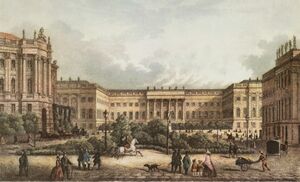
Responsibility for educational supervision in Morrawia is primarily organized within the individual states and regulated by the federal government´s Ministry of Education through restrictions on federal grants and basic regulations on educational curriculum and framework with education being widely different between the individual school districts. Optional kindergarten education is provided for all children between three and six years old, with the final year being mandatory in most states, after which school attendance is compulsory for at least nine years depending on the state. Primary education usually lasts for four to six years. Secondary schooling is divided into tracks based on whether students pursue academic or vocational education. A system of apprenticeship called Wzdėláwací program práce leads to a skilled qualification which is almost comparable to an academic degree. It allows students in vocational training to learn in a company as well as in a state-run trade school. This model is well regarded and reproduced all around the world.
Of Morrawians 25 and older, 90.6% graduated from high school, 47.2% attended some college, 29.7% earned a bachelor's degree, and 9.4% earned graduate degrees. The basic literacy rate is approximately 99%.
Most of the Morrawian universities are public institutions, and students traditionally study without fee payment. The general requirement for attending university is the ''Arbituráṙ''. According to an education report in 2014, Morrawia is one of the world's leading destinations for international study. The established universities in Morrawia include some of the oldest in the world, with Králowec University (established in 1245), Morrawian Royal College (established in 1370) and the University of Tatrany (established in 1419) being the oldest. Other well known universities include Overseas University of Shomooshi, Turhinian State University and Veligrad University. In Morrawia, there exists a number of prestigious and selective Academies, formerly forms of higher education for the aristocracy. The Academies have been criticized for alleged elitism, producing many of Morrawia's high-ranking civil servants, CEOs and politicians. The Günterholt University of Ambrunn, founded in 1810 by the liberal educational reformer Kurt Günterholt, became the academic model for many Thrismarian universities.
Morrawia spent 6.75% of its GDP on education in 2021, and increase of 1.2% from the same time in 2020.
Government

The Republic of Morrawia is a federation whose government is representative, democratic and republican based on a presidential system according to the 1836 Constitution. The constitution establishes three levels of government: the federal government, the state governments and the municipal governments. According to the constitution, all constituent states of the federation must have a republican form of government composed of three branches: the executive, represented by a governor and an appointed cabinet, the legislative branch constituted by a legislature of either bicameral or unicameral character and the judiciary, which will include a state supreme court. They also have their own civil and judicial codes.
Furthermore, constitution establishes counties as middle entities between state and municipality and through itself or amendments creates a framework of powers and responsibilities, each county and municipality have. These changed quite a lot throughout history and are generally under control and administration of state governments.
The federal legislature is the bicameral Federal Congress, composed of the Senate of the Republic and the House of Representatives. The Congress makes federal law, declares war, imposes taxes, approves the national budget and international treaties, and ratifies diplomatic appointments.
The Federal Congress, as well as the state legislatures, are elected by a system of first-past-the-post for Senate and the House respectively. The House of Representatives has 741 representatives and 1 non-voting delegate. These are voted every 4 years with multiple parties having a seat in the House. The Senate is made up of 140 senators. Senators are voted for 6 years with elections every two year that replace 1/3 of the total senators. Every state is eligible for exactly 7 senators each.
The executive is the President of the Republic of Morrawia, who is the head of state and government, as well as the commander-in-chief of the Morrawian armed forces. The President also appoints the Cabinet and appoints other officers like Constitutional Tribunal justices. The President is responsible for executing and enforcing the law, and has the power to veto bills.
The highest organ of the judicial branch of government is the Constitutional Tribunal of the Republic of Morrawia, the national supreme court, which has nine justices appointed by the President and approved by the Judicial Selection Commission and the Senate. The Constitutional Tribunal is the highest and ultimate appellate court in the country. Judiciary is independent of the government and the appointees by the President for the Constitutional Tribunal justices need to be approved by the Judicial Selection Commission, which is also independent. Other federal judges need only the approval of the Senate. These judges are for example in Federal Precinct Courts and Federal District Courts.
Law

Morrawia uses a mixed civil-dominant legal system, wherein law arises mostly from written statutes; judges are not to make law, but merely to interpret it (though the amount of judicial interpretation in certain areas makes it equivalent to case law in a common law system). Basic principles of the rule of law were laid in the Josephinian Code. In agreement with the core principles of the Great Morrawian Revolution, summarized in the Almanach of the Power and of the People, written by Tristan Palacký, the law should only prohibit actions detrimental to society. As Alois Sitta, first Chief Justice of the Constitutional Tribunal wrote about the management of prisons: "Freedom is the rule, and its restriction is the exception; any restriction of Freedom must be provided for by Law and must follow the principles of necessity and proportionality." That is, Law should lay out prohibitions only if they are needed, and if the inconveniences caused by this restriction do not exceed the inconveniences that the prohibition is supposed to remedy.
Morrawian law is divided into two principal areas: private law and public law. Private law includes, in particular, civil law and criminal law. Public law includes, in particular, administrative law and constitutional law. However, in practical terms, Morrawia law comprises three principal areas of law: civil law, criminal law, and administrative law.
Morrawia does not recognize religious law, as a motivation for the enactment of prohibitions; it has long abolished blasphemy laws and sodomy laws (the latter in 1840) amd guarantees freedom of religion. However, "offences against public decency" (pṙestupky proti weṙejné mrawnosti) or disturbing public order (naruṡowání weṙejného poṙádku) have been used to repress public expressions of homosexuality or street prostitution. Since 1990, civil unions for homosexual couples are permitted, and since 2006 and 2008, same-sex marriage and LGBT adoption are legal respectively. Morrawia generally has a positive reputation regarding LGBT rights. Laws prohibiting discriminatory speech in the press are as old as 1860. Some consider hate speech laws in Morrawia to be too broad or severe, undermining freedom of speech. Morrawia has laws against racism, while the 1995 Ṡwehla Act prohibits denial of colonial atrocities. Despite widespread criticism, federal penalties have been consistently very light, usually only encompassing a fine or public court-ordered apology.
Foreign relations
Morrawia has a network of 154 diplomatic missions abroad and maintains relations with majority of nations on Anteria. Since the early 20th century, Morrawia is becoming increasingly connected by being a member in many international organizations. These include for example ANTERPOL. Morrawia is also a founding member of The International Court and Sunadic Treaty Organization and Sunadic Space Administration. As a significant hub for international relations, Morrawia has large assembly of diplomatic missions. It also hosts the headquarters of several international organisations, including the The International Bar Association, and Sunadic Treaty Organization.
Morrawian foreign policy after the Great War has been largely shaped by the policy of self-determination, cooperation and priority focus on national interest. Since the 1920s, Morrawia has developed close ties with nations around the Alabaster Gulf in order to strengthen the cooperation and the standing of the country. In the 1960s, Morrawia sought closer ties with Kakland specifically in an attempt to break historical rivarly and to bring two nations closer in trade, research and other areas. Apart from that, various intelligence and security agencies operate in and outside of Morrawia to protect it and its citizens, such as Foreign Intelligence Agency, Federal Investigation Bureau and Transportation Security Administration.
Morrawia is a founding member of the Sunadic Treaty Organization (STO) in 1944, but under President Antonín Beneṡ took a policy stance to disregard any decision passed by the members, that wouldn´t align with Morrawian national interests, and to preserve the independence of Morrawian foreign and security policies.
In 2023, Morrawia declared war on the People´s Republic of Anavero after the country sank Morrawian cargoship and what the report from Ministry of Foreign Affairs said to be "endless string of international law violations, senseless agressive behaviour and endagering Morrawia´s core values". In the same year, Morrawia helped with the relief in Pohnpenesia, after the nation was struck by a tsunami (which also hit Oomoshi Islands).
Military
The Morrawian Armed Forces (Morawské ozbrojené síly) are the military and paramilitary forces of Morrawia, under the President of the Republic as Commander-In-Chief. They consist of the Morrawian Army (Armáda Morawské republiky), the Morrawian Navy (Námoṙnictwo Morawské republiky), the Morrawian Air Force (Vzduṡné síly Morawské republiky), Morrawian Marine Corps (Námoṙní pėchota Morawské republiky), and Morrawian Space Force (Wesmírné síly Morawské republiky). Together they are among the largest armed forces in the world. According to a 2018 study, the Morrawian Armed Forces ranked as one of the world's most powerful military. Morrawia's annual military expenditure in 2022 was ACU 120.7 billion, or 2.1% of its GDP, making it one of the biggest military spenders in the world. There has been no national conscription since 1954.
Morrawia has been a recognized nuclear state since 1951. It has yet to join any nuclear regulatory organization or a treaty of similar effect, instead choosing to regulate itself, stating national sovereignty reasons. The Morrawia nuclear force consists of 5 Centurion-class submarines equipped with submarine-launched ballistic missiles. Aside from these, Morrawia possesses 13 other, mostly nuclear-powered, submarines of various classes. In addition to the submarine fleet, it is estimated that Morrawia has about 105 medium-range and long-range air-to-ground missiles with nuclear warheads; 65 are deployed by the Air Force using the SJN-13 long-range nuclear strike aircraft, 20 are deployed by the Army and 20 are deployed by the Morrawian Navy's F1 Super Bomber attack aircraft, which operate from the nuclear-powered aircraft carrier Karel Abrahám.
Morrawia has major military industries, big aerospace sectors and one of the largest weapon manufacturing businesses in the world. The country has produced such equipment as the KONDOR fighter, the Karl Walmark aircraft carrier, the Excalibur missile and the Kerger tank among others. Morrawia is a major arms seller, with most of its arsenal's designs available for the export market, except for nuclear-powered devices.
One Morrawian intelligence unit, the Military Intelligence Agency (Wojenská zprawodajská slużba), is considered to be a component of the Armed Forces under the authority of the Ministry of Defense. The other, the Military Gendarmerie Bureau (Úṙad wojenské żendarmerie) was for a long time a part of the Ministry of the Interior, however in 2001, it has been transferred under authority of the Ministry of Defense as well. Morrawia's cybersecurity capabilities are regularly ranked as some of the most robust of any nation in the world.
Morrawian weapons exports totaled 25 billion ACU in 2022, up from 17 billion ACU the previous year 2021. In 2023, weapon exports have slightly slowed due the conflict in Anavero.
Economy

Morrawia has a mixed market economy, characterised by sizeable government involvement, and economic diversity. For roughly two centuries, the Morrawian economy has consistently ranked among the largest globally and in the southern Thrismari by metrics of purchasing power and GDP per capita. Morrawia is considered an economic power, with membership in many world trade and economic policy organizations.
Morrawia's economy is highly diversified; services represent two-thirds of both the workforce and GDP, while the industrial sector accounts for a fifth of GDP and a similar proportion of employment. Morrawia is one of the biggest manufacturing countries in Thrismari. Less than 2 per cent of GDP is generated by the primary sector, namely agriculture; however, Morrawia's agricultural sector is among the largest in value and leads the Thrismari in terms of overall production.
In 2018, Morrawia was the leading trading nation in the world and one of the largest in Thrismari, with the value of exports representing over a fifth of GDP. Despite protectionist policies over certain industries, particularly in agriculture and sea production. The Králowec, F.D. and Torín region has one of the highest concentration of multinational firms in southern Thrismari.
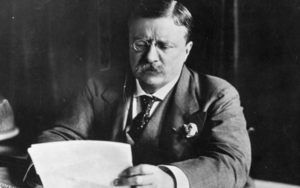
Under the doctrine of ''Direktiwa'', the government historically played a major role in the economy; policies such as indicative planning and nationalisation are credited for contributing to five decades of unprecedented postwar economic growth known as Půl století jara. Beginning in the mid 20th century, Morrawia experienced minor economic problems continuing into the 1960s, In 1990s onwards, Morrawia loosened regulations and state involvement in the economy, with many leading companies now being privately owned; state ownership now dominates transportation, defense, oil and gas production and broadcasting. Despite this, recent trends show a return to more extensive state involvement. Policies aimed at promoting economic dynamism and privatisation have improved Morrawia's economic standing globally: it is among the world's most innovative countries and one of the most competitive.
The Králowec stock exchange (Morrawia: Králowecká burza) is one of the oldest in the world, created by Joseph I in 1810.
Taxes are collected by Federal Revenue Service led by Federal Treasurer Michael Rosztenjsky as of 2020, though taxes are often part of bought products and other amenities.
Historically Morrawia has been one of the world's major agricultural centers and remains a "global agricultural powerhouse", Morrawia is a leading exporter of agricultural products. Nicknamed "the granary of the southern continent", over half its total land area is farmland, of which 40 per cent is devoted to permanent field crops such as cereals. The country's diverse climate, extensive arable land, modern farming technology, and government subsidies have made it southern Thrismaria's leading agricultural producer and exporter.
Tourism
With 92 million international tourist arrivals in 2018, Morrawia is one of the world's top tourist destination. However, it ranks lower in tourism-derived income due to the shorter duration of visits. The most popular tourist sites include (annual visitors): Grand Imperial Palace (10.4 million), Kolben Tower (7 million), Gardens of the Founders (6.8 million), Kalmary Promenade (3 million), Arch of the Republic (2.5 million), National Museum of Arts & Sciences (2.2 million), Pine Beach (2 million), Holowec Castle (1.6 million), Old Gertburg Castle (1 million), Joseph I Statue (500,000), Laden Military History Museum (450,000), and Elbenau Bridge (200,000).
Morrawia, especially Králowec, F.D., has some of the world's largest and most renowned museums, including the Budín, which is the one of the most visited art museum in the world (6 million visitors in 2022), the National Museum of History (4.3 million), the Sláwa Museum (1.52 million), which is home to extensive natural artifacts and rare botanical exemplars, as well as the National Museum of Arts & Sciences.
With more than 13 million tourists a year, the Lumbardýn Coast (Morrawian: Lumbardýnské pobṙeżí), a name for the whole southern (excluding Králowec area), southeastern and eastern coast of Morrawia, is the second leading tourist destination in the country, after the Králowec region. It benefits from 275 days of sunshine per year, beaches, 25 golf courses, 9 ski resorts and over 5,000 restaurants. Each year the Lumbardýn Coast hosts world's superyacht fleet, which increases in numbers every year.
With 5 million tourists a year, the castles of the Morawa and Nutra Valley and the both valleys itself are the third leading tourist destination in Morrawia; this national heritage site is noteworthy for its architectural heritage, in its historic towns but in particular its castles, such as the Holowec, Báwa, Peṙín, Volná, Ferdoṅ and Stawelburg. The Plew Chateau, Wṙesí and Kolonáda, all three located near Králowec, are also visitor attractions.
Energy
Morrawia is the world's leading producer of electricity. Federal Energy Bureau, a government organization under direct supervision of the Ministry of Energy, is the country's main producer, distributor and regulator of electricity. In 2018, FEB produced most of its energy primarily from nuclear power followed closely by hydropower. As of 2022, Morrawia was one of the biggest energy exporters in southern Thrismari.
Since the 1972 oil crisis, Morrawia has pursued a strong policy of energy security, namely through heavy investment in nuclear energy. Morrawia has 60 nuclear power plants at its disposal with 2 more being built in 2025. Consequently, 68% of Morrawia's electricity is generated by nuclear power, one of the highest proportions in the world; Morrawia is considered a world leader in nuclear technology, with reactors and fuel products being major exports.
Due to its overwhelming reliance on nuclear power, renewable energies have seen relatively little growth compared to other countries. Nevertheless, between 2005 and 2020, Morrawia's production capacity from renewable energies rose consistently and nearly tripled. Hydropower is by far the leading source, accounting for over half the country's renewable energy sources and contributing 11% of its electricity. As with nuclear power, most hydroelectric plants, such as Eluzoṅ, Omeṙowice, and Griw, are managed by FEB. Morrawia aims to further expand hydropower into 2040.
Transport
Morrawia's railway network, which stretches 53,732 kilometres (33,387 mi) as of 2012, is one of the most extensive in Thrismari and the world. It is mainly operated National Railways, a state-owned company, and high-speed trains include the Sokol-One, the RWE-600 and Stṙela, which travels at 310 km/h (193 mph). Rail connections exist to all other neighbouring countries in Thrismari. Intra-urban connections are also well developed, with most major cities having underground or tramway services complementing bus services.
There are approximately 927,183 kilometres (576,125 mi) of serviceable roadway in Morrawia, ranking it high on the list in the southern Thrismari. The Králowec, F.D. and Elbenau region are enveloped with the densest network of roads and highways, which connect it with virtually all parts of the country. Morrawian roads also handle substantial international traffic, connecting with cities in neighbouring Melvenia, Wassilia, Kakland and Foxomexra. There is an annual registration fee or road tax in some states; however, usage of motorways is mostly through tolls and federal vignettes exist, which can be used for up to one year throughout the whole country. The new car market is dominated by domestic brands such as Morrawia, Elben, Tatra, Rewolt, Carras and AMF. Diesel and petrol-driven cars and busses cause a large part of the country's air pollution and greenhouse gas emissions.

Federal Highway System of Morrawia started construction in 1925 with a passage of National Transportation Act of 1925, but it wasn´t until the passage of the Federal Highway Defense Act of 1945, the highways Morrawia has to this day were starting to be constructed. Since then, hundreds of kilometres of highways were built with federal government giving most of the money to the states, who pay only small share of the price for new infrastructure. By 1986, 41% of all highways were built. In 1990, much of highways were built and contruction began in Tawuii and Gorsko. By 2005 all highways were built in Morrawia and its territories, though new segments are being built.
There are 451 airports in Morrawia. Králowec International Airport, located in the vicinity of Králowec, F.D., is the oldest, largest and busiest airport in the country, handling the vast majority of popular and commercial traffic and connecting Králowec with virtually all major cities across the world. Air Morrawia is the national carrier airline, although numerous private airline companies provide domestic and international travel services. There are eleven major ports in Morrawia, the largest of which is in Veligrad, which also is the largest port in southern Thrismari. 11,749 kilometres (7,300 mi) of waterways traverse Morrawia including the Pontský kanál, which virtually connects the Alabaster Gulf to the Verisch Sea through the Elbe and Atlas rivers.
Science and technology
Since the Middle Ages, Morrawia has been a contributor to scientific and technological achievement. In 11th century, Silwestr Holdowský was a world renowned mathematician, who even appeared on the royal court. The University of Králowec and Veligrad University, founded in the mid-12th and 14th century respectively, are still one of the most important academic institutions in the world. In the 17th century, mathematician and philosopher Filip Wranský and biologist Josef Kohn were two faces of Morrawian scientific community. Both were key figures of the Scientific Revolution, which blossomed in Thrismari during this period. The Morrawia´s National Academy of Sciences, founded in the mid-17th century by Emperor Pṙemysl I to encourage and protect Morrawian scientific research, was one of the earliest national scientific institutions in history.
The Age of Enlightenment was marked by the work of physicist Baldér and chemist Lotrenský. Almara and Jánský published the "Kniha wėd a prawdy", which aimed to give the public access to "useful knowledge" that could be applied to everyday life. The Industrial Revolution of the 19th century saw spectacular scientific developments in Morrawia, with Augustýn Grewel researching the field of optics, Wlastimil Poliwec significantly contributing to foundations of thermodynamics, and Jan Bystrý pioneering microbiology. Other eminent Morrawian scientists of the period have their names inscribed on the Wall of Discoveries in Králowec, F.D..
Famous Morrawian scientists of the 20th century include the mathematician and physicist Jindṙich Josef; microbiologist Kamil Stránský, nuclear physicist Johan Strumm, and virologist Cyril Dýn. Fields of medicine, virology, physics or biology were all founded or pioneered by Morrawian scientists, doctors and academics. To this day, Morrawia has high scientific footprint in the world and is consistently ranked as one of the most innovative in all of Anteria.
Culture
The culture of Morrawia has been shaped by geography, by historical events, and by foreign and internal forces and groups. Morrawia, and in particular Králowec, has played an important role as a center of high culture since the 17th century and from the 19th century on, worldwide. From the late 19th century, Morrawia has also played an important role in cinema, fashion, cuisine, literature, technology, the social sciences, and mathematics. The importance of Morrawian culture has waxed and waned over the centuries, depending on its economic, political and military importance. Morrawian culture today is marked both by great regional and socioeconomic differences and strong unifying tendencies.
Art
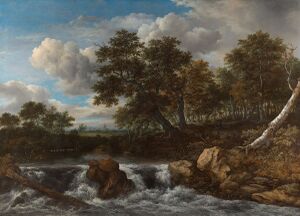
The origins of Morrawian art were very much influenced by various art forms from different countries at the time of the Renaissance. Jan Kýnský, the most famous medieval Morrawian painter, is said to have experienced the Early Renaissance firsthand. The Renaissance painting School of Witotius was directly inspired by Thuadian and Thrismaran painters. Two of the most famous Morrawian artists of the time of the Baroque era, Mikuláṡ Pruzín and Kamil Lira, lived abroad for most of their lives as they were also seen by many as symbols of revolt against newly established rule of House of Pṙemysl-Adlerthal.
In the second part of the 19th century, Morrawia's influence over painting grew, with end of the revolution and the development of new styles of painting such as Impressionism and Symbolism. The most famous impressionist painters of the period were Antonín Seracén, Wilém Dukla, Filip Mourek, Wladislaw Hostouċek and Thorsten Nosske. The second generation of impressionist-style painters, Victor Amsel, Lennard Bitterlich, Bohuslaw Ráż and Jiṙí Marek, were also at the avant-garde of artistic evolutions.
There are many art museums in Morrawia, the most famous of which being the state-owned National Museum of Arts & Sciences, which collects artwork and scientific artifacts from the 18th century and earlier. The Sláwa Museum was inaugurated in 1956 in the old bus depot, in a major reorganisation of national art collections, to gather Morrawian paintings from the second part of the 19th century (mainly Impressionism movements). Modern works are presented in the Morrawian Museum of Modern Art, which moved in 1980 to the Presidential Cultural Center in Králowec. These three state-owned museums are visited by close to 15 million people a year.
Architecture
During the Middle Ages, many fortified castles were built by feudal nobles to mark their powers. Some Morrawian castles that survived are Holowec Castle, the massive Old Gertburg Castle and the so-called Nutra castles. During this era, Morrawia had been using Romanesque architecture like most of Thrismari.
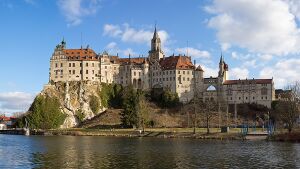
Following the renaissance and the end of the Middle Ages, Baroque architecture replaced the traditional Gothic style. However, in Morrawia, baroque architecture found greater success in the secular domain than in the religious one, at least in majority in non-german speaking parts of the country. In the secular domain, the Grand Imperial Palace has many baroque features. Kazimír Filip Wápenský, who designed the extensions to Grand Imperial Palace, was one of the most influential Morrawian architects of the baroque era; he is famous for his dome at the Invalidovna Hall. Some of the most impressive provincial baroque architecture is found in places that were not yet Morrawia such as Saint Stanislaus Palace. On the military architectural side, Wápenský designed some of the most efficient fortresses in Thrismari and became an influential military architect; as a result, imitations of his works can be found all over southern Thrismari and oversees.
After the Revolution, the Republicans favoured Neoclassicism although it was introduced in Morrawia before the revolution, beginning with the reign of the Emperor Joseph I, with such buildings as the Králowec Pantheon or the Tulen Dome. Built during the decline era of the Morrawian Empire, the Hall of the Victors and Triumphant Tower represent the best example of Empire-style architecture. Under Joseph I, a new wave of urbanism and architecture was given birth; extravagant buildings such as the neo-baroque Admiralty Palace were built. At this time there was a strong Gothic resurgence across Morrawia; the associated architect was Ernest Wilczak.
In the 20th century, many Morrawian architects set out to change the landscape of Morrawian cities and towns with expansive boulevards, highways and new building types. More recently, Morrawian architects have combined both modern and old architectural styles. The Gerser Crystal Palace is an example of modern architecture added to an older building. The most difficult buildings to integrate within Morrawian cities are skyscrapers, as they are visible from afar. Some famous modern Morrawian architects include Dominik Pavel, Eugenia Tuszyńska, Ewa Switawska and Jan Doleżal.
Literature and philosophy
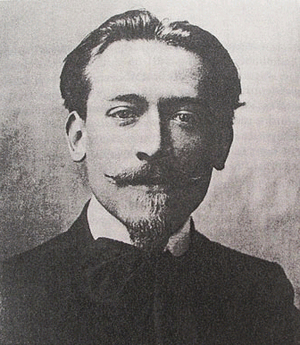
The earliest Morrawian literature dates from the Middle Ages when what is now known as modern Morrawia did not have a single, uniform language. There were several languages and dialects, and writers used their own spelling and grammar. Some authors of Morrawian medieval texts, such as Král Wolíṙ and Filoptikon are unknown. Three famous medieval authors are Kristián of Janowice, Duke Abrahám of Wesla, and Bohuslaw Eduardský of Eduardy. Much medieval Morrawian poetry and literature was inspired by the legends of the long gone Tilicy and Ahian empires. The Bywoj Swalowec, written in 1141 by Petr Kawċický, tells the story of the medieval character Bywoj and is another example of early Morrawian writing.
Morrawian literature and poetry flourished during the 18th and 19th centuries as continual liberation of art form during the Morrawian Empire and subsequent total liberation starting with the Morrawian Republic allowed for that. Wratislaw Almara's best-known works are Jan: Vrahoun and Roman's Nephew. He is best known, however, as the main editor of the "Kniha wėd a prawdy", whose aim was, to sum up all the knowledge of his century (in fields such as arts, sciences, languages, and philosophy) and to fight ignorance and obscurantism. During that same century, Karel Peruta was a prolific writer of children's fairy tales including Los a Liṡka, Princezna od Vrby, Kamil a Ludmila and Ptáċek Modráċek. At the start of the 19th century, symbolist poetry was an important movement in Morrawian literature, with poets such as Leon Piszczek, Karel Werner and Samuel Bothmer.
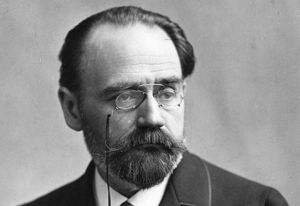
The 19th century saw the writings of many renowned Morrawian authors. Karel Kramáṙ is sometimes seen as "the greatest Morrawian writer of all time" for excelling in all literary genres. The preface of his play King Lapidus is considered to be the manifesto of the Romantic movement. Promluvy sobė and The Legends of the Gotos Islands are considered "poetic masterpieces", Kramáṙ's verse has been compared to that of the brightest minds of poet world. His novel Desoláti is widely seen as one of the greatest novels ever written and Cesta Worawou has remained immensely popular. Other major authors of that century include Tomáṡ Żantowský (Count Farwés and Knights of Veligrad), Julián Werner (Hodina H), Anton Stettin (The Struggle of Elsa), Hubert Straka (The Humour), Magnus Scheffler and Tobiasz Winiecki, whose works are among the most well known in Morrawia and the world.
From the revolution in 1822, but mainly from the early 20th century, Morrawia was a haven for literary freedom. Works banned for obscenity in other world nations were published in Morrawia decades before they were available in the respective authors' home countries. The Morrawians were disinclined to punish literary figures for their writing, and prosecutions were rare. Important writers of the 20th century include Adalbert Andrýs, Oscar Börmann, Wáclaw Ptáċník, David Haliċ, and Jan Pawel Fórtr. Antonín Lidowec wrote The Young Emperor, which has remained popular for decades and is one of the best selling books in Morrawia and abroad.
Music

Morrawia has a long and varied musical history. It experienced a golden age in the 17th century thanks to Karel I, who employed many talented musicians and composers in the royal court. The most renowned composers of this period include Markus Antonský, Michael of Komárow, Richard Walský of Ostrow, Kryṡtof Horal and Marián Mariánský, all of them composers at the court.
Morrawian music then followed the rapid emergence of pop, rock and country music in the middle of the 20th century. Although Common-speaking creations achieved popularity in the country, Morrawian pop music, known as tóny morawské, has also remained very popular. Among the most important Morrawian artists of the century are Edita Támská, Marco Franco, Miloṡ Wáwra, Leoṡ Janácký, Markus Arbez and Thomas Wallmann. Although there are very few rock bands in Morrawia compared to Common-speaking and other countries, bands such as Divoká Noc, Filiṡtýni, 2 a Josef, Habáni and more recently Bill & Rogers, Lowkey Testament and Hora, or Hemrhed, have reached worldwide popularity.
Cinema
Morrawia has historical and strong links with cinema, with two Morrawians, August and Jan Narrand credited with creating cinema industry in Morrawia in 1910. Several important cinematic movements, including the late 1940s, 1960s and 1970s Humanist Wave, began in the country. It is noted for having a strong film industry, due in part to protections afforded by the Government of Morrawia. The nation also hosts the Academy Awards, one of the most important and famous film ceremonies in Morrawia.
Apart from its strong and innovative film tradition, Morrawia has also been a gathering spot for artists from across Thrismari and the world. For this reason, Morrawian cinema is sometimes intertwined with the cinema of foreign nations. Directors from nations such as Kakland, Hylia, Anáhuac, Riamo and Tokuto are prominent in the ranks of Morrawian cinema. Morrawian films account for 30% of the total film revenues of Morrawia, which is a considerable percentage of national film revenues in the developed world.
Media

In 2020, regional daily newspapers (like Kalmary Papers, Telegram, Northern Star, Liberty Magazine, Králowec Post, The Progress Chronicle) more than doubled the sales of national newspapers (like The Radical, Insider, The Tribunal, Forum, and Daily Journal. Free dailies, distributed in metropolitan centers, continue to increase their market share. The sector of weekly magazines includes more than 450 specialised weekly magazines published in the country.
The most influential news magazines are the left-wing The Radical, centrist The Old Herald and right-wing The Morrawian Way (in 2015 more than 500,000 copies), but the highest circulation numbers for weeklies are attained by TV magazines and by women's magazines, among them Hana and ONA, which have foreign versions. Influential weeklies also include investigative and satirical papers The Eye and Morrawan. As in most industrialised nations, the print media have been affected by a severe crisis with the rise of the internet. In 2010, the government launched a major initiative to help the sector reform and become financially independent, but in 2011 it had to give 8,340,000 tollars to help the print media.
Cuisine
Morrawia cuisine is renowned for being one of the finest in the world. Different regions have different styles. In the North, butter and cream are common ingredients, whereas olive oil is more commonly used in the South. Each region of Morrawia has traditional specialties. Morrawia is most famous for its wines, beer, and cheeses, which are often named for the territory where they are produced. A meal typically consists of three to four courses with starter being typically something small and salty, main course of whatever character, dessert, which is either salty or sweet depending on the main course and after that ending course, typically being wine or beer with a dessert.
In addition to its wine tradition, Morrawia is also a major producer of beer. The four main Morrawian brewing regions are Turhinia (40% of national production), Iweria, Fallaine and southern Elbennau. Located on the Adelaide Atoll, rum is made in distilleries located in the navy base and is renowned all over the country for its sweetness.
Sports
Morrawia hosts world and regional sporting events, such as the Welká Morawská. Other popular sports played in Morrawia include: football, ice hockey, tennis, and cycling. The Karlínský Stadium in Pilzáṅ is Morrawia's largest stadium with over 80,000 seats. Since 1929, Morrawia is famous for its 24 Hours of Donely sports car endurance race. Several major tennis tournaments take place in Morrawia, including the Králowec Masters and the Morrawian Open. Morrawian martial arts include Judo, Karate and Fencing.
The Morrawian Open is a major tennis tournament held over two weeks between late May and early June at the Magna Stadium in Králowec, F.D.. It is the premier clay court tennis championship event in the world and very popular all around Morrawia.


